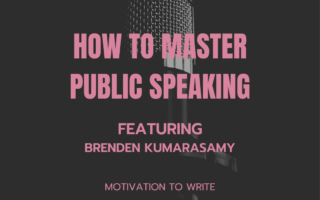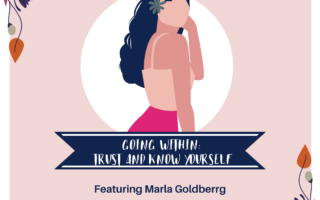Ojai Awakening
On a hot Tuesday afternoon in June, I entered Ojai on the back of a motorcycle via Highway 150. A steady stream of cars traveled east and west while the sidewalks hosted a few pedestrians with casual gaits and curious eyes. I had heard that Ojai was the new SoCal vacation hotspot, an affordable alternative to Palm Springs and San Fransico.
I expected it to be a snackable version of Palm Springs–palm tree-lined streets, crowded sidewalks, hotel resorts, shopping centers, and restaurants. But as we glided into town that afternoon, I felt like I was entering Mayberry revamped in Spanish Colonial architecture.
Highway 150 turns into Main Street through downtown Ojai, the hub of its city life. We searched for parking as we meandered through residential side streets, careful not to awaken quaint suburban houses with window shades half-drawn like sleepy eyes. No people were outdoors watering lawns or walking dogs; no children played tag. Only windchimes cascaded gently in the distance.
My friend Rad and I stopped at an intersection in front of a two-story house. A giant Trump 2024 banner hung across its facade, with lawn signs echoing its message, booming against the silence. It was the loudest voice in the neighborhood.
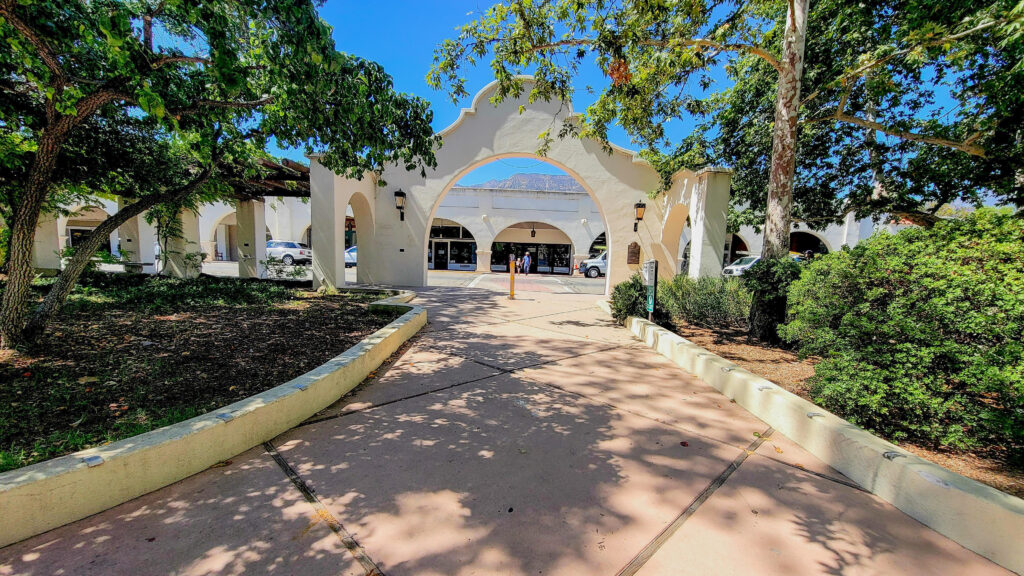
We parked in the lot of Libbey Park, named after benefactor Edward Libbey, who donated the park to the Ojai Civic Association in 1917. The vast trees welcomed us from the sweltering heat, and a bubbly Grecian fountain greeted us at the entrance. Here is where the kids gathered, at least a few of them. Three teenagers performed skateboard tricks on the bandstand while a father shadowed his young son riding a tricycle. Another father held his young daughter’s hand as she licked an ice cream cone.
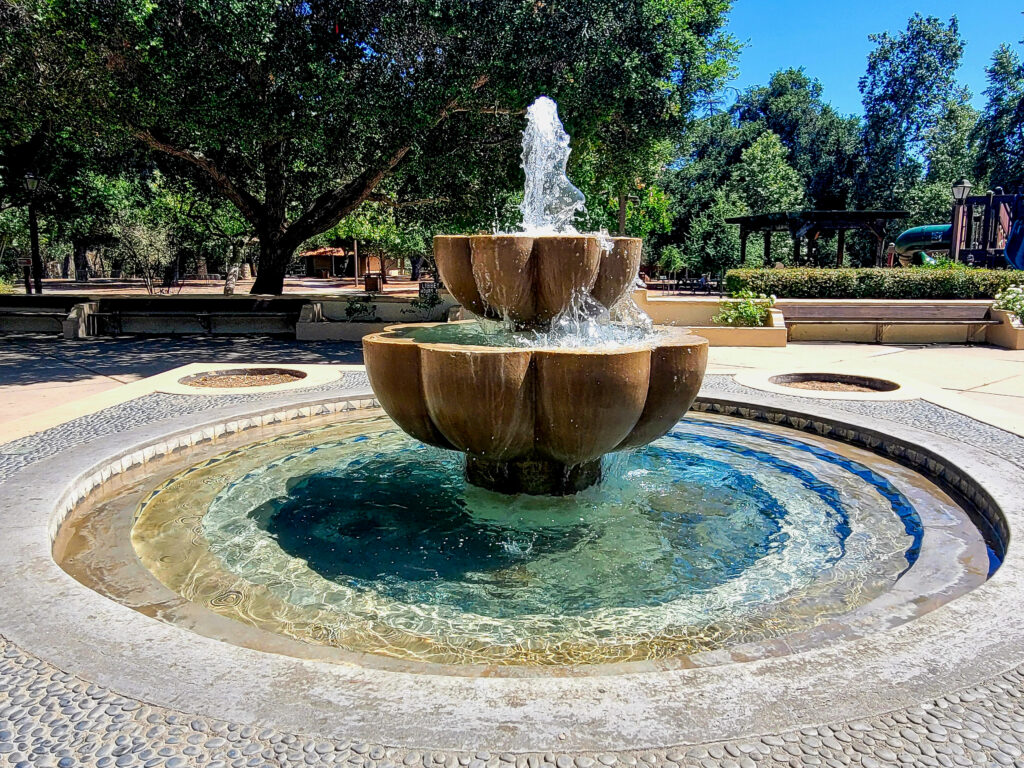
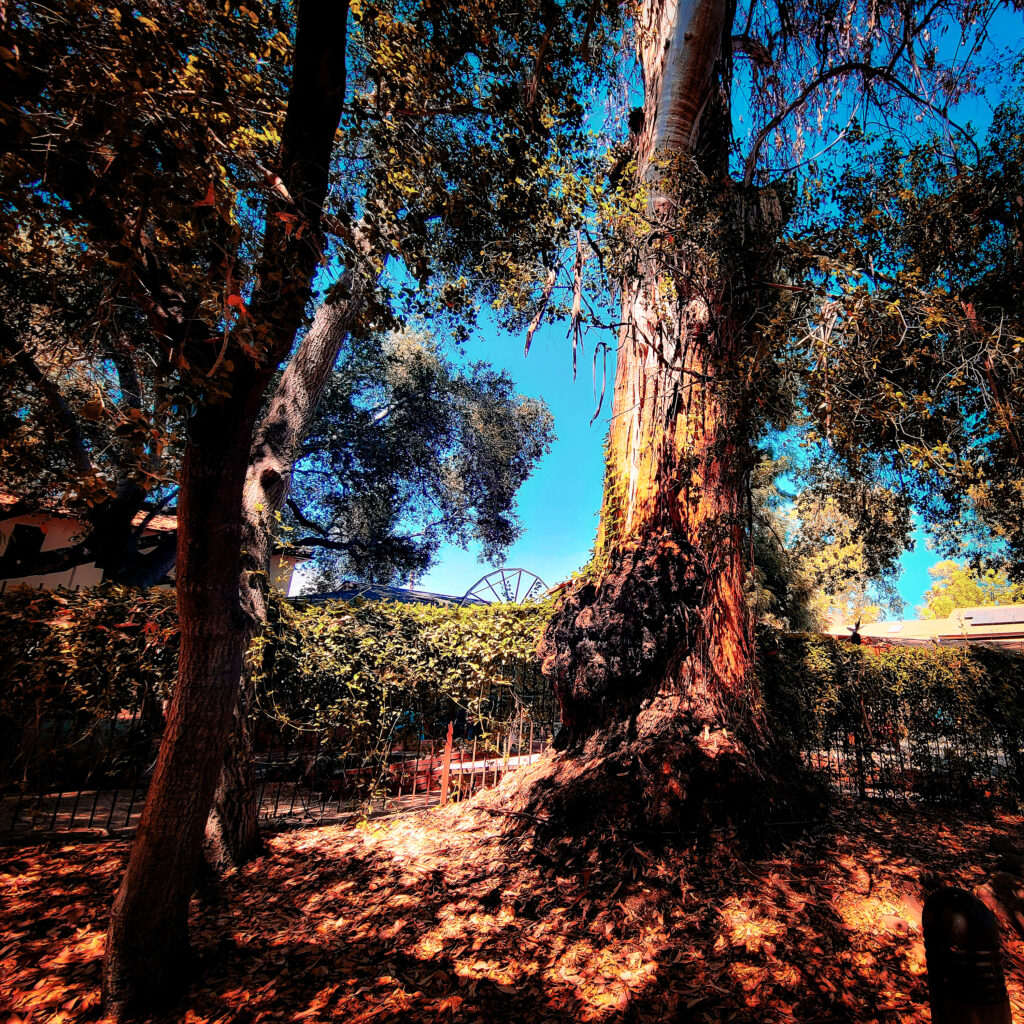
Despite the people, skateboards, and cars passing by, there was absolute stillness in the air that caught me off guard and gave me pause. Then, I took a deep breath and drank the quietness, savoring each gulp.
Strolling down Main, we discovered a steep stairwell tucked in the corner of an underpass. A sign plastered on the wall read, “Notice: Persons using this tower for purposes of observation DO SO AT THEIR own RISK by order of the Ojai Civic Association.” At the top of the stairs was a door leading to the overpass. I am scared of heights and don’t like climbing things, including mountains, ladders, and steep staircases. But Rad wanted to shoot a photograph of me standing midway up the steps and looking down. My stomach knotted at the suggestion. He insisted that my climb would be therapeutic, forcing me to face my fear. My legs inched up the steps. My knees protested, threatening to pass out. I froze midway and looked down toward the camera, fear flooding my face. He snapped the picture. I exhaled and descended.

Across the street on Main and Signal is the Ojai Arcade, a strip mall with a beautiful pergola and the trappings of a small town: a boutique, an art gallery, a pharmacy, an ice cream parlor, and a cafe. We wandered through the strip, looking through shop windows that framed scenes of merchandise without patrons. We followed it around the corner and discovered a small shopping center with a grass lawn, fountain, and vivid foliage.
Two women sat under a tree eating lunch. Otherwise, the center was practically empty. Rad and I were thirsty, so we found Revel Kombucha Bar, where I ordered the Son of a Peach kombucha. While waiting for our order at the bar, I spoke with one of the servers behind the counter, who looked like he was barely out of high school. He had been living in Ojai for only six months. He previously lived in Orange County and moved to Ojai with his mother. “I like it,” he said with a smidge of doubt, suggesting he was more polite than honest. “It’s slow and quiet. Really small, too. You see the same people everywhere.”
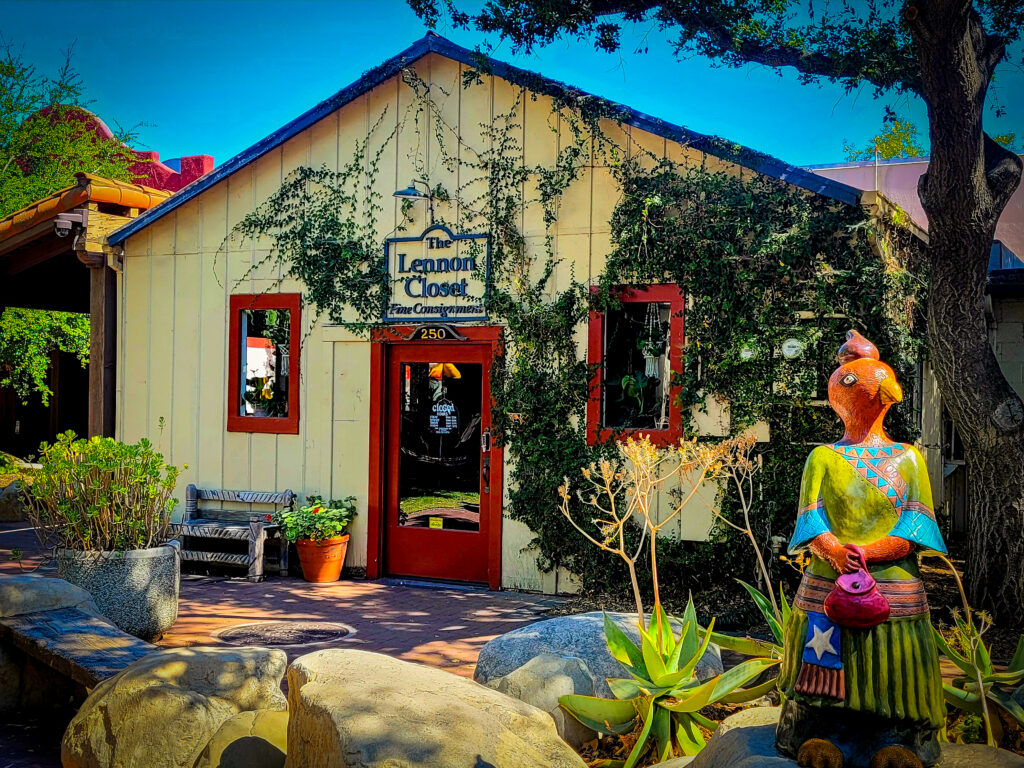
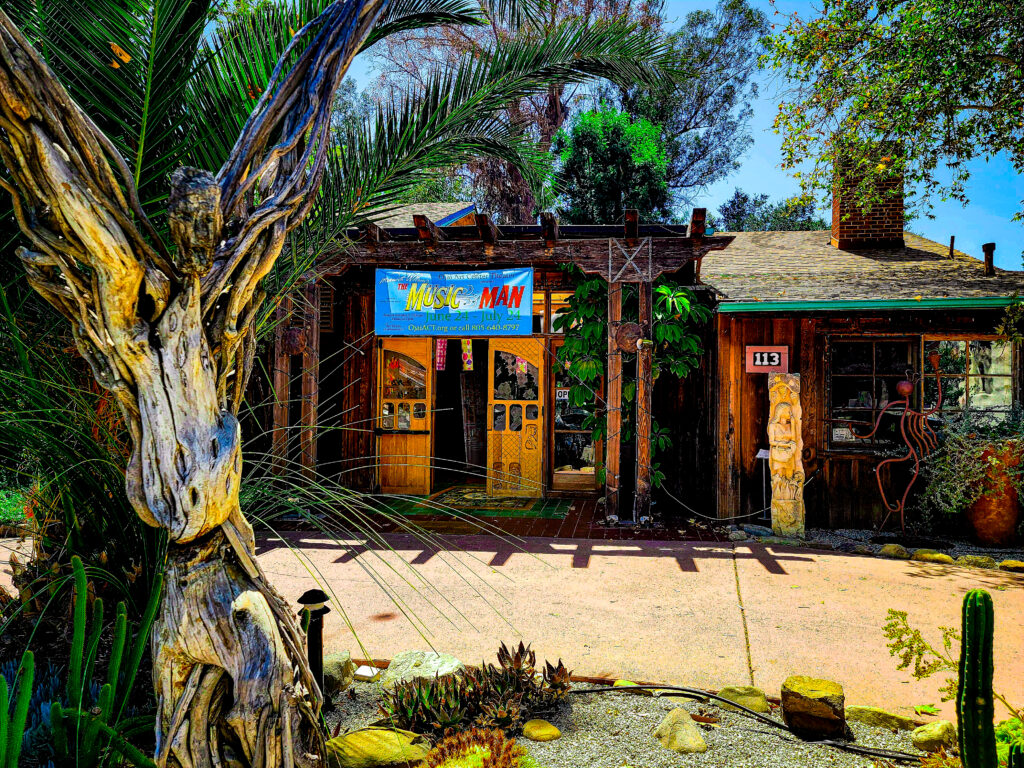
A woman in line behind us was the mother of another server’s best friend. They embraced and spoke in high-pitched phrases and excited gestures. The other patrons sat at the small tables or stood against the walls, waiting for their beverages. The mother’s animated conversation blossomed in the lull between the barista calling names and handing out tea.
Most businesses were closed by two o’clock that afternoon except for a few restaurants. Lunch options were limited, and I felt frustrated searching through Yelp. We chose Little Sama Ojai, a South East-Asian eatery in the Topa Topa Brewery, named after the Topa Topa mountains surrounding the valley.
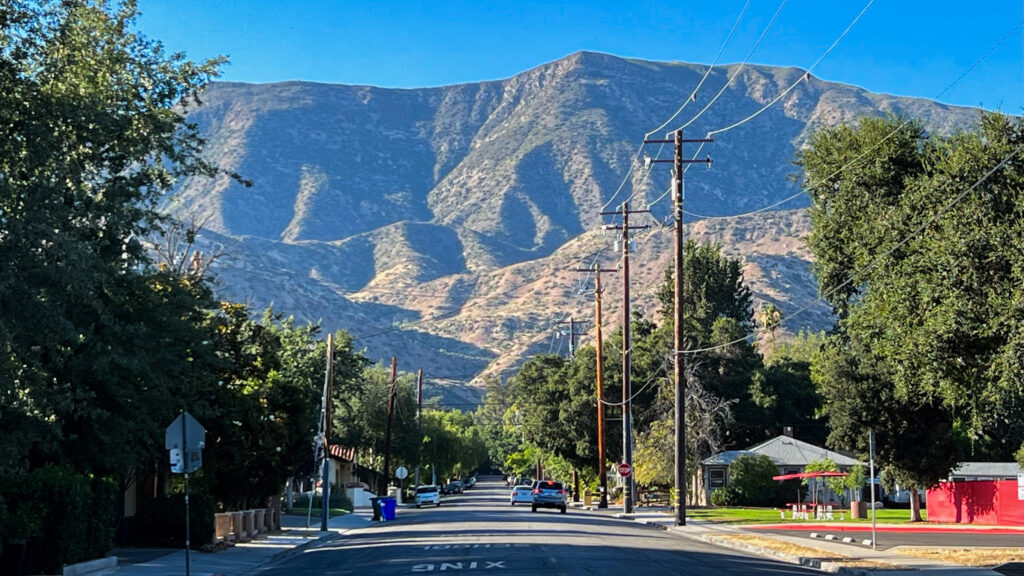
The brewery buzzed with life. For a second, the noise felt out of place. From where had all these people come? Outdoor and Indoor seating brimmed with families and friends eating, drinking, talking, laughing, soaking in the sun, and defying silence. I ordered the Sama Donburi Rice Bowl with tofu, beets, poached eggs, pickled onions, and pickled cucumber. Much to my embarrassment, I hadn’t looked closely at the ingredients before I ordered. When the server placed my meal in front of me, I knew I wouldn’t like it. It looked uninspired, like someone dropped random leftovers into a bowl and hoped for the best. And there were too many beets, those hearty vegetables that are great for digestion but taste like soil. I placed another order for a grilled cheese sandwich and tatter tots. Thank goodness for the kid’s menu.
Dessert was delicious–coffee ice cream with chocolate drizzle, strawberries, and almond graham cracker crunch. Each bite of juicy strawberries and creamy coffee flavors delighted me.
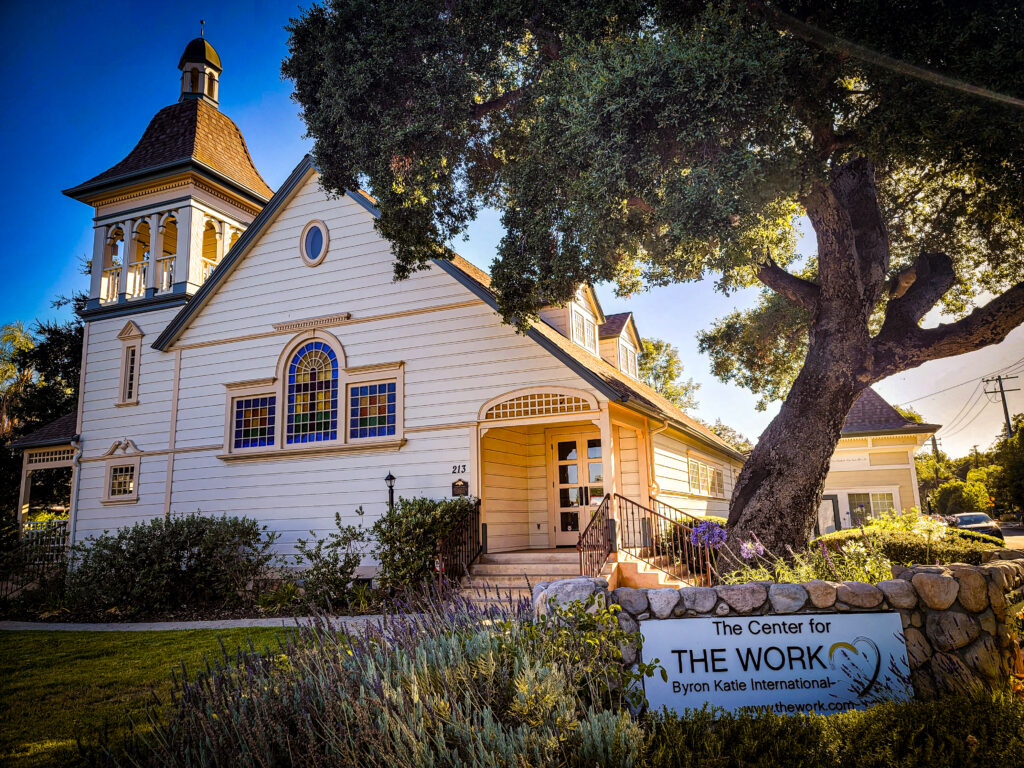
We walked further down Main Street before turning left on Montgomery, which led to a residential area. I noticed what looked like a church on the next corner. No people were present, but the building said enough on its own. It was large yet unassuming, white with blue trim, stained glass windows, and a large sign that read, “The Center for the Work: Byron Katie International.” I geeked out. I am a fan of Byron Katie and have read most of her books. I love the Work, its questions, the inquiry it prompts, and the clarity it brings.
I stood in awe as Rad scanned the premises, searching for the big deal. “It’s Byron Katie,” I said.
“Who?”
We took a free brochure from the side door. I reviewed the four questions: Is it true? Can you absolutely know that it’s true? How do you react? Who would you be without the thought?
Such simple questions. Who would I be without the thought, “Ojai should be like Palm Springs?” Perhaps I would be more open-minded, full of excitement and wonder. Maybe I would have been more grateful for the two o’clock closures because they made searching for a place to eat an adventure. There are many possibilities. I know nothing for sure except this: Life always gives me what I need. And on that day, I needed to be in Ojai. I needed the wind chimes and deserted sidewalks, the underwhelming rice bowl, and the strolls down Main Street. Although these memories may collect dust over time, they are a resource when I need to feel calm.
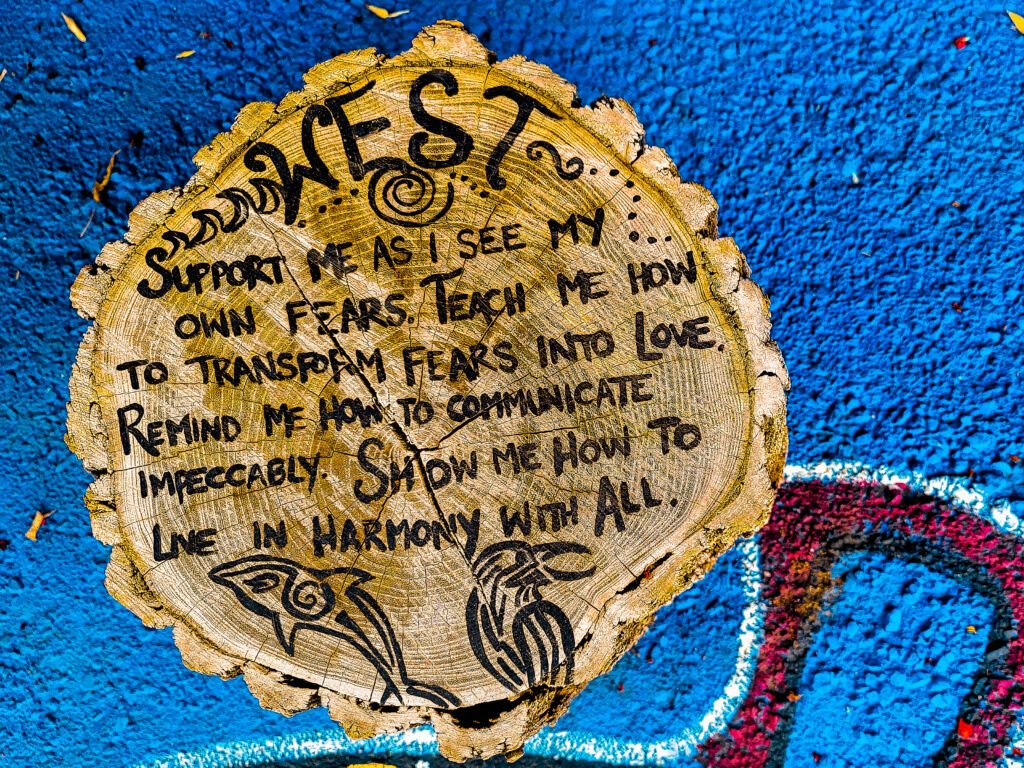
Ojai comes from the Chumash word for “moon.” For many, the moon is synonymous with magic, and a full moon is supernatural. At its behest, werewolves and vampires yearn for blood; ocean tides surge and ebb, and women’s menstrual cycles regulate. Ojai is neither a mecca for menstruating women nor the home of werewolves, but it is enchanting. If you stand outside long enough, you hear it whisper hushed murmurs fading through the leaves. “Stay,” it says, “Rest for a while.”
I look up toward the moon and say, “Thank you.”
For more articles, visit ZayZoh.com.
Want to see AI-generated art based on this essay? Subscribe to my Substack.
